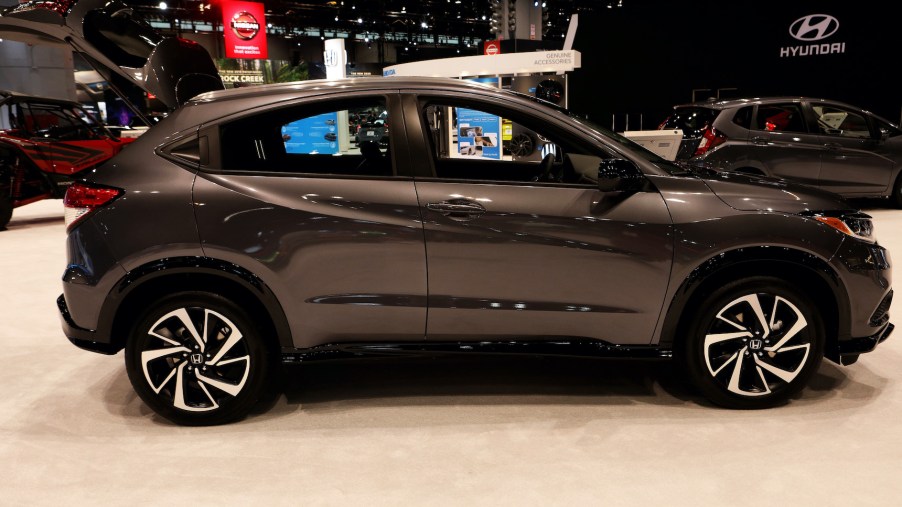
It’s Clear Who Should buy a Honda HR-V and Who Should Buy a Toyota C-HR
Honda and Toyota are the Chevy and Ford of Japanese automakers, and their cars are always competitive with one another. With entries like the Honda HR-V and the Toyota C-HR, the SUV market is the current battlefield for these Japanese titans, and they’ve both made plenty of SUVs to duke it out with. Here’s a look at the battle between the Honda HR-V and the Toyota C-HR.
What’s great about the Honda HR-V
As U.S. News wrote, when it comes to price, the Honda HR-V just barely edges out the Toyota C-HR. In terms of their base costs, the Honda is about $500 cheaper than the Toyota is. That said, in terms of their most expensive trims, the Toyota comes out on top as the C-HR’s top trim is about $2,500 cheaper than the HR-V’s top trim is.
Price aside, the HR-V swept the field when it comes to its driving ability, according to U.S. News. The HR-V has better acceleration, better handling, and better ride quality than the C-HR does. On top of that, the HR-V is more fuel efficient too. The HR-V gets 28 MPG in the city and 34 MPG on highways, which is better than the C-HR’s 27 MPG in the city and 31 MPG on highways.
What really sets the Honda HR-V apart though, is the fact that Honda offers all-wheel drive while the C-HR doesn’t. Additionally, the HR-V has far more cargo room than the C-HR does. Without folding its seats, the Honda HR-V gets about 24 cu. ft. of cargo space, while the Toyota C-HR gets 19 cu. ft. of cargo space. With the seats folded, though, Honda’s SUV gets about 59 cu. ft. of cargo space, while Toyota’s only gets 36 cu. ft. of cargo space.
What’s great about the Toyota C-HR
While U.S. News said that the Toyota C-HR lost in those categories, it did win in many other categories. In terms of safety and reliability, something both Honda and Toyota are well-known for, U.S. News gave the nod to the C-HR. The Honda HR-V is a safe and reliable SUV, but U.S. News wrote that the C-HR was simply safer and more reliable than its rival.
The C-HR also won in three other categories, and they all had to do with its interior features. U.S. News said that the Toyota’s seats were more comfortable than the Honda’s seats were. Additionally, the C-HR’s interior was simply nicer and fancier than the HR-V’s interior was. U.S. News said that the HR-V’s interior was “plain” while the C-HR’s interior used “high-quality materials.”
The Toyota C-HR’s interior tech was also far superior to the HR-V’s. Not only are more features standard in the C-HR, but things are simply bigger and fancier. For example, the C-HR gets a standard 8-inch touchscreen, while the HR-V gets a standard 5-inch touchscreen.
This was also the case with smart safety systems. For example, the C-HR has automatic emergency braking as standard, while the HR-V only has a standard rearview camera.
Who should buy what?
Due to this clear divide in which SUV won which categories, U.S. News ultimately gave the Honda HR-V the win. U.S. News wrote that Honda’s model is better in categories that SUV shoppers care about such as cargo space, price, and fuel economy.
That said, the Toyota C-HR wasn’t far behind the HR-V in most of those categories. Toyota’s model is clearly better when it comes to its interior quality and comfort features.
This means that, ultimately, if you just want a good SUV to run errands with, then the HR-V is the better option. But if you want a comfortable SUV that has a lot of interior features to entertain passengers with, then the C-HR is the better option.



